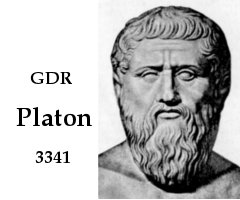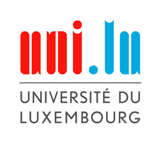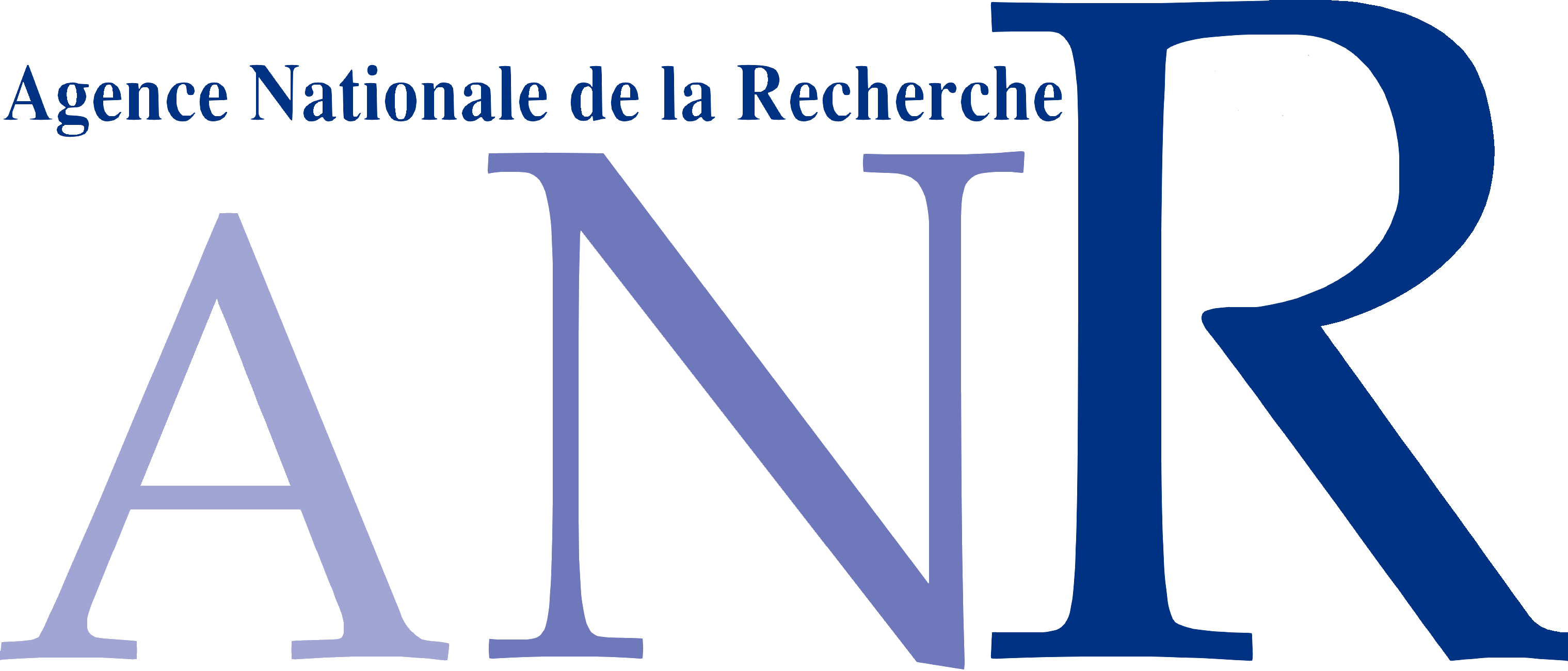Regards croisés sur la géométrie pseudo-riemannienne
et les représentations Anosov
11–14 juin 2018, Université du Luxembourg
Programme
Il y aura quatre mini-cours et quelques exposés de jeunes chercheurs. Chaque mini-cours sera donné par un spécialiste dans le domaine qu'il abordera, apportant une approche différente. L'ensemble des mini-cours permettra d'expliquer comment ces différents sujets interagissent.
Il y aura un colloquium de Michael Wolf.
Andrea Tamburelli, doctorant au département de mathématiques de l'université du Luxembourg, soutiendra sa thèse le jeudi 14 juin à la suite des exposés de la conférence.
Mini-cours
- François Guéritaud : Affine actions from Lie group multiplication
The main theme of this series of lectures will be the connection between (i) building equivariant maps for a pair of nearly-equal group actions (say, on a symmetric space with symmetry group $G$), and (ii) building proper actions on affine $n$-space. The basic case is $G=\text{PSL}(2,\mathbb{R})$ and $n=3$. This will include a survey of the main sources of examples of affine quotients, which are still poorly understood in general --- even for free groups.
-
Olivier Guichard : Characterizations of Anosov representations.
This series of lectures will address the following points:- intrinsic characterizations of Anosov subgroups (in particular without hyperbolicity assumption)
- some properties of their moduli spaces (mainly openness)
- the associated geometric structures.
-
Sara Maloni : $H^3$ & $AdS^3$: Quasi-Fuchsian and globally hyperbolic maximal compact manifolds, their convex hulls and a universal point of view.
In this mini-course I will discuss similarities and differences between quasi-Fuchsian manifolds in $H^3$ and globally hyperbolic maximal compact manifolds in $AdS^3$. I will try to underline open questions through all the lectures.
In Lecture 1 I will focus on the hyperbolic case. After revising hyperbolic geometry, I will discuss the theory of Fuchsian and Kleinian groups, which are discrete subgroups of $\text{PSL}(2,\mathbb{R})$ and of $\text{PSL}(2,\mathbb{C})$ respectively, and their actions on $H^2$ and $H^3$. I will mostly focus on quasi-Fuchsian groups. These groups have been studied using complex analytic methods until the 70s when W. Thurston revolutionised the field introducing more topological methods. I will discuss Bers simultaneous uniformisation theorem, whose proof uses complex analytic methods, and then I will discuss some of Thurston's theorems and conjectures about the convex cores of these hyperbolic manifolds.
In Lecture 2 I will focus on the analog theory in anti-de Sitter space, which can be thought as a Lorentzian analog of hyperbolic space. First, I will recall the definition of the anti-de Sitter geometry and then I will define globally hyperbolic maximal compact manifolds, which are an analog of quasi-Fuchisan manifolds. I will then describe the analog of Bers and Thurston's theorems and conjectures, many of which are due to Mess.
Finally, in Lecture 3, if I have time, I will discuss a universal version of these points of views and I will discuss quasi-circles in the boundary of hyperbolic and anti-de Sitter space.
-
Nicolas Tholozan : Surfaces minimales dans les espaces symétriques riemanniens et pseudo-riemanniens
Le but de ce mini-cours sera de présenter certaines interactions entre l’étude des surfaces minimales et celle des représentations Anosov.
D’après les travaux de Labourie, étant donnée une représentation Anosov $\rho$ d’un groupe de surface dans un groupe de Lie semi-simple $G$, il existe toujours une surface minimale $\rho$-invariante dans l’espace symétrique de $G$. Mais les propriétés de cette surface sont mal comprises en général (on ne sais pas en général si elle est unique, si elle plongée, ni même si elle est immergée). Il est parfois plus aisé et plus utile d’étudier les surfaces minimales $\rho$-invariantes dans certains espaces $G$-homogènes pseudo-Riemanniens.
S’il n’existe pas à ma connaissance de méthode générale pour prouver l'existence de telles surfaces, nous verrons en revanche que leur unicité est parfois plus facile à montrer dans un contexte pseudo-Riemannien. Nous expliquerons également comment ces surfaces peuvent nous renseigner sur les propriétés géométriques des représentations Anosov et sur la topologie de l’ensemble de ces représentations.
Exposés
-
Jean-Philippe Burelle : Fundamental domains for positive representations
Positive representations, defined by Fock and Goncharov in 2003, are a class of interesting representations of the fundamental group of a surface with non-empty boundary into $\text{PSL}(n,\mathbb{R})$. Under some additional assumptions, these representations are $B$-Anosov, and so by results of Guichard-Wienhard and Kapovich-Leeb-Porti, they admit cocompact domains of discontinuity in projective space when $n$ is even. I will explain how to build polyhedral fundamental domains for this cocompact action, and for $n=4k+3$ I will explain how a similar construction gives a compact fundamental domain in the sphere $S^{2k+2}$. This is joint work with N. Treib.
-
Federica Fanoni: Basmajian-type inequalities and collar lemma for maximal representations
Basmajian's celebrated identity gives a way to compute the length of the boundary of a hyperbolic surface in terms of the lengths of the so-called orthogeodesics (geodesics orthogonal to the boundary at both endpoints). This identity can be generalized to the context of maximal representations -- a class of representations of the fundamental group of a surface that can be seen as a generalization of Teichmüller space. I will describe the classical identity, introduce maximal representations, discuss Basmajian's identity in this setup and show how one can deduce a collar lemma for maximal representations from this result. Joint work with Beatrice Pozzetti.
-
Daniel Monclair : Limit sets of Anosov representations
Anosov representations can be defined as representations in a semi-simple Lie group $G$ having a "nice" limit set in a compact quotient $G/P$. Depending on the pair $(G,P)$, these limit sets can be very different. In rank one (quasi-Fuchsian groups), they are fractal objects. For some examples in higher rank (such as Hitchin representations), they are more regular, and can even be $C^1$ submanifolds of $G/P$. We will discuss some "intermediate" examples for which the limit sets are Lipschitz submanifolds of $G/P$, but not $C^1$ submanifolds. We will also discuss "how fractal" these objects are by looking at a modified version of the Hausdorff dimension. This is joint work with Olivier Glorieux.
Colloquium de Michael Wolf
L'exposé de colloquium de Michael Wolf aura lieu en salle 3.370, à la Maison du Savoir (MSA), le 12 juin à 17:30.
Titre: Sheared Pleated surfaces and Limiting Configurations for Hitchin's equations
Résumé: A recent work by Mazzeo-Swoboda-Weiss-Witt describes a stratum of the frontier of the space
of $\text{SL}(2,\mathbb{C})$ surface group representations in terms of 'limiting configurations' which solve
a degenerated version of Hitchin's equations on a Riemann surface.
We interpret these objects, originally defined gauge-theoretically, in terms of the hyperbolic geometric objects of
shearings of pleated surfaces. The two perspectives are related via a third, the shapes of harmonic maps of surfaces.
We aim to introduce the elements we need from each of the three areas.
(Joint with Andreas Ott, Jan Swoboda, and Richard Wentworth.)
Lien.
Soutenance d'Andrea Tamburelli
La soutenance de thèse d'Andrea Tamburelli aura lieu en salle 3.370, à la Maison du Nombre (MNO), le 14 juin à 14:00.
Titre: Anti-de Sitter geometry: convex domains, foliations and volume
Résumé: The thesis deals with various aspects of anti-de Sitter geometry that emphasize the deep interactions between globally hyperbolic AdS three-manifolds and Teichmüller theory.
We will focus in particular on two results. First, we will talk about globally hyperbolic manifolds with smooth convex boundary and the problem of the prescription of the metrics on
the boundary components. Then, we will study the volume of the convex core of these manifolds and find coarse estimates in terms of relevant quantities in Teichmüller theory.




